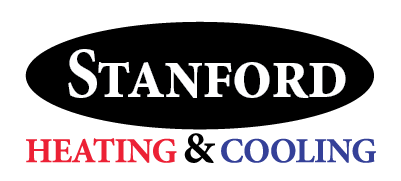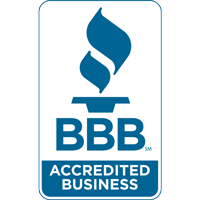
A furnace is often a background player at home, keeping you warm in the cold winter months. It often doesn’t get noticed until something goes wrong.
One source may be that your furnace has a cracked heat exchanger. It’s a potentially dangerous issue, so it’s important to learn the evidence of a cracked heat exchanger and what you can do if you believe that is the problem.
What Is a Heat Exchanger in a Furnace?
A heat exchanger transfers heat from the combustion chamber inside your furnace to the air that moves inside the air ducts. It generally does this using coils or tubes that warm the air while functioning as a barrier to keep byproducts formed in the combustion chamber, called flue gasses, from escaping out into your home.
Is a Cracked Heat Exchanger Dangerous?
Given its key role, it’s no surprise that a cracked heat exchanger can be very dangerous. Cracks in the heat exchanger can enable dangerous gasses – like carbon monoxide, which can be lethal – to circulate throughout your home.
For this reason, don't ever run your furnace if you believe you're dealing with a cracked heat exchanger, as this could make the entire family sick. Contact an HVAC professional immediately if you believe your heater has a cracked heat exchanger that should be repaired.
Four Warning Signs of a Cracked Heat Exchanger:
- Furnace turns off: Cracks in the heat exchanger can cause your furnace to turn off.
- Odd Smells: If the air escaping your furnace has a powerful chemical smell, it might be a sign gasses are slipping through cracks in your heat exchanger. These gasses, which may smell like formaldehyde, are a common warning sign.
- Carbon monoxide alarm initiates or you feel symptoms of poisoning: If a cracked heat exchanger is emitting carbon monoxide inside your home, your carbon monoxide alarm should go off or household members could experience signs of carbon monoxide poisoning. Side effects include headaches, dizziness, weakness, nausea, vomiting or feeling drowsy. If an alarm goes off or you feel sick, exit the home right away and then call for help.
- Soot: If you notice black sooty accumulating near the exterior of your furnace, it’s another sign something could be seriously wrong.
What to Do if Your Furnace Heat Exchanger is Cracked
If you worry your furnace has a cracked heat exchanger, call a pro experienced in furnace installation Bloomfield as soon as possible so they can examine your system and, if required, perform a furnace heat exchanger replacement. Costs should vary depending on the situation, but estimates run in the neighborhood of $1,000 to $3,000.
Fortunately, the good news is that heat exchangers are regularly covered by the warranty. You’ll want to check the warranty paperwork on your furnace, since while the warranty may not cover the entire cost of repairs, it still may significantly lower your bill.
How to Prevent a Cracked Heat Exchanger in Your Home
One of the easiest ways to minimize the risk of problems in your furnace overall is through routine furnace maintenance. Furnaces provide the best possible return on investment when they work efficiently. Contacting a certified professional to inspect your furnace for worn-out parts, dirty filters and other likely problems can help you avoid getting a big bill later on.
It’s also helpful to take a look at your furnace filters every few months – it’s ideal some filters be replaced every 90 days or sooner if they are dirty or grimy. While the filters are not part of the heat exchanger itself, the strain of pulling air through a clogged filter makes your entire furnace work longer to do its job. And the harder your furnace works, the more strain pieces like the heat exchanger will experience.

